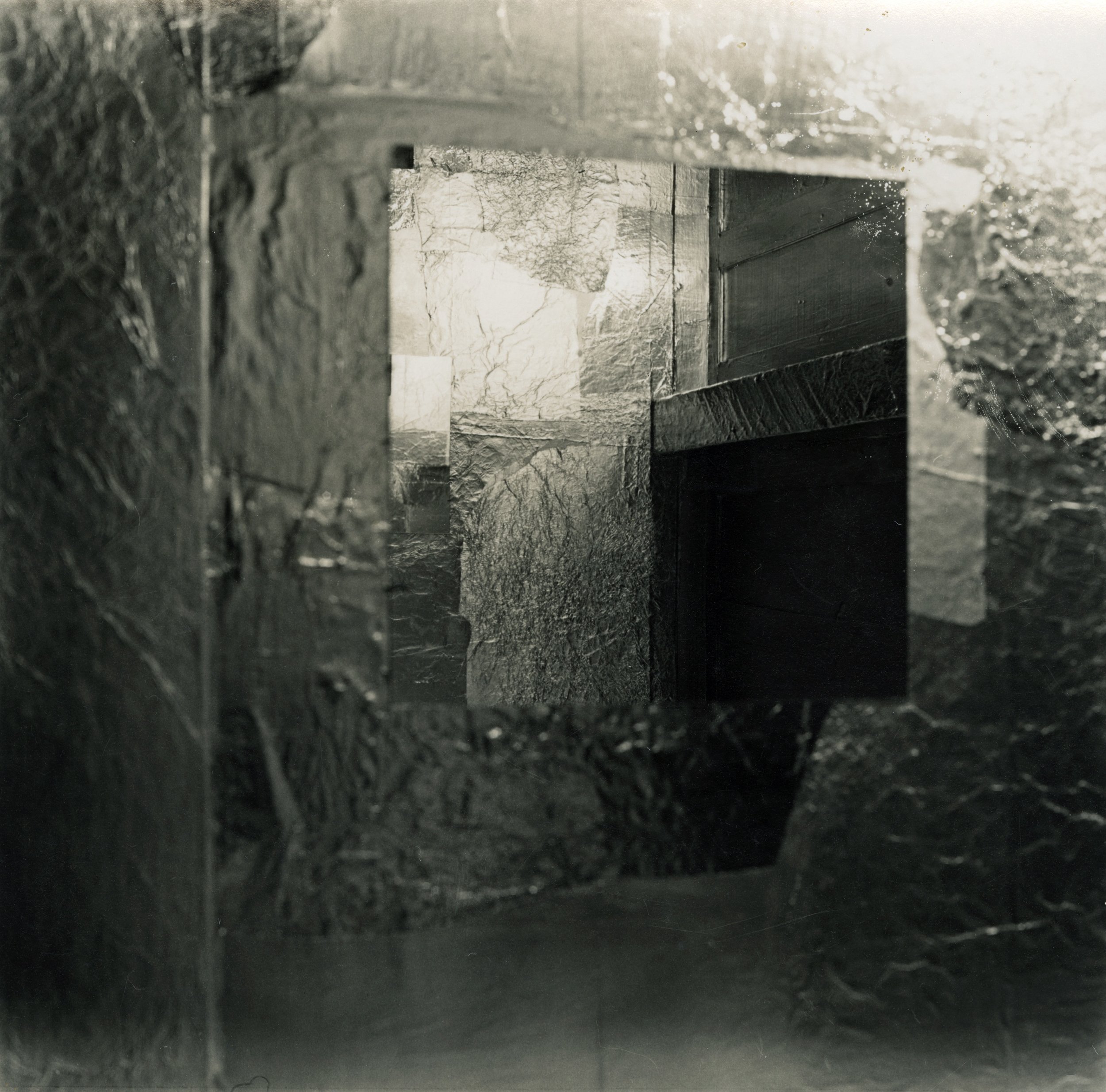Image: Jay DeFeo, Untitled 1973. Photo collage. Estate no. E2344. ©2018 The Jay DeFeo
Foundation/Artists Rights Society (ARS), New York
An exhibition at Mills College Art Museum celebrates the work of two women working with photo-manipulation.
Northern California figures prominently in photography’s western 20th-century history. Far from New York and the orbital pull of Stieglitz and Steichen, some of the medium’s female luminaries who lived on the west coast - Imogen Cunningham and Ruth Bernhard particularly - experimented with techniques and subjects that departed from strict definitions of “straight” photography. Building on that legacy, Mills College Art Museum (MCAM) celebrates the work of Jennifer Brandon and Jay Defeo - one current and one former professor at the prestigious all women’s college - who pursue material manipulation as aesthetic expression. Curated by MCAM director Dr. Stephanie Heron, the exhibition is on view through March 12, 2018.
Exhibition review by Roula Seikaly
© Jennifer Brandon, Fusing, 2015. Solarized photogram. Image courtesy of the artist.
Jennifer Brandon’s work opens the installation. Working with found or repurposed materials including safety glass, Cinefoil, and shock-absorbing foam, she obscures what is recognizable by toying with scale, prompting us to consider the unexpected. A lush solarized print, Fusing (2015) addresses photographic depth of field, or rather its lack. The cracked safety glass, captured in extreme close up, shrinks the for-, middle, and background markers to a single, immediate plane where abstraction overwhelms the medium’s familiar representational capacity.
Foiled III (2017) features a crumpled length of jet-black Cinefoil that the artist then stretched and photographed in extreme close up. The imperfectly restored foil suggests a low-relief map of an unknown landscape or a vast and silent void that shadows our mortal experience. A low vitrine positioned opposite Brandon’s work presents many of the items she photographed in situ, revealing the real-time objects or tableau creations that are rendered surreal in her compositions.
© Jennifer Brandon, Foil III, 2015. Chromogenic print. Image courtesy of the artist.
Of the two, Jay Defeo (1929-1989) is the better-known artist, but not as a photographer. Born Mary Joan, but known as “Jay,” she lived in the Bay Area for the balance of her life. Artistically associated with the Beat Generation and Bruce Conner as a founding member of the Rat Bastard Protective Association, Defeo is renown for producing The Rose, a one-ton, nearly 12’ high canvas that brilliantly blurs the line between painting and sculpture. The Rose (1958-1966) commanded Defeo’s creative and psychological energy for nearly a decade.
Reviewing Defeo’s 2013 Whitney Museum of American Art retrospective, Holland Cotter noted that when she finished the painting, her momentum expired and would not be revived until the early 1970s when she introduced photography and photo collage to her practice. Working with new materials, but holding true to a personal precept that resisted material hierarchy, the artist continued exploring abstraction, texture, and notions of scale in what became the second act of her professional life.
Image: Jay DeFeo, Untitled (Salvador Dalí's Birthday Party), 1973. Gelatin silver chemigram.
© 2018 The Jay DeFeo Foundation/Artists Rights Society (ARS), NY.
Defeo’s effort to maintain a distance between herself and the materials with which she worked - here represented by photocopies, pigment, chemigraphs, and contact prints in addition to collages - is undercut by the attention she paid to the formal characteristics of each piece. Representing an accomplished series of collages on view, Untitled (1973) [the lead image for this reiew] features a delicate abstract gelatin silver print that was precisely excised from a larger unknown visual context and rephotographed.
What emerges from these small objects is Defeo’s long-held concern with both surface and depth within a two-dimensional context and tonal relationships along a seemingly endless grayscale. When true black or white tones appear, the contrast is as arresting as the abstract compositions those tones enliven. Similarly prepared and titled, Untitled (1973) includes collaged images of waves that when placed side-by-side suggest the explosive organic growth that awed those who have viewed The Rose and reinforces the palpable aesthetic resonance with Brandon’s work that builds as the exhibition progresses.
© Jennifer Brandon, Formations (detail), 2017. Affixed prints mounted on aluminum (From
left: Silver gelatin fiber print, archival pigment print, unique solarized Silver gelatin fiber print,
polaroid and metallic print). Image courtesy of the artist.
Image: Jay DeFeo, Untitled 1973. Cut gelatin silver print. Estate no. P0354. ©2018 The Jay
DeFeo Foundation/Artists Rights Society (ARS), New York
Jennifer Brandon & Jay Defeo: Photographic Works meet and surpass multiple milestones. Pairing their work declares institutional acknowledgment and appreciation of two artists’ lesser-known work in photography, whose contributions to Mills College have undoubtedly influenced multiple generations of young artists. Beyond that laudable accomplishment, the exhibition highlights similar adventurous and experimental practices without burdening our experience with notions of influence. Brandon and Defeo’s overlapping interests and practices are evident in the images, not labels or wall text, and it is our pleasure to recognize that magic at every turn.
Image: Jay DeFeo, Untitled 1973, Gelatin silver print image. Estate no. P1118A. ©2018 The
Jay DeFeo Foundation/Artists Rights Society (ARS), New York
Image: Jay DeFeo, Untitled 1973. Gelatin silver print. Estate no. P1626C. ©2018 The Jay
DeFeo Foundation/Artists Rights Society (ARS), New York
© Jennifer Brandon, Peak I , 2017. Archival pigment print. Image courtesy of the artist.
Image: Jay DeFeo, Untitled 1973. Photo collage. Estate no. E2343. ©2018 The Jay DeFeo
Foundation/Artists Rights Society (ARS), New York










